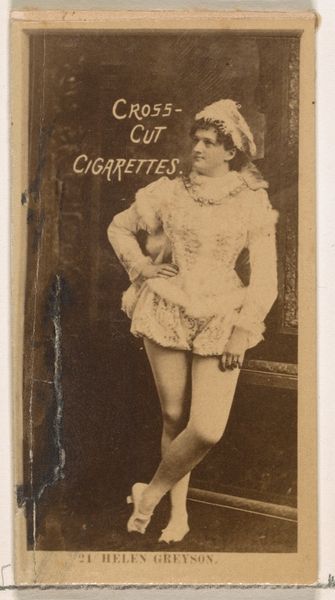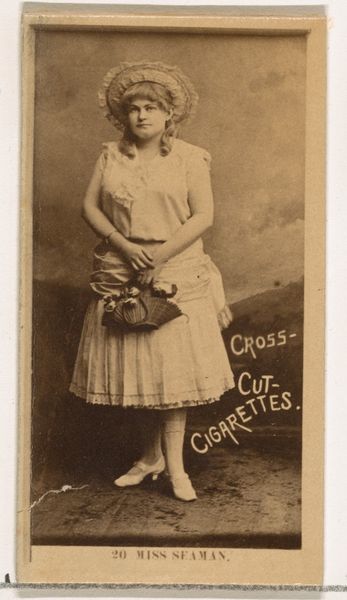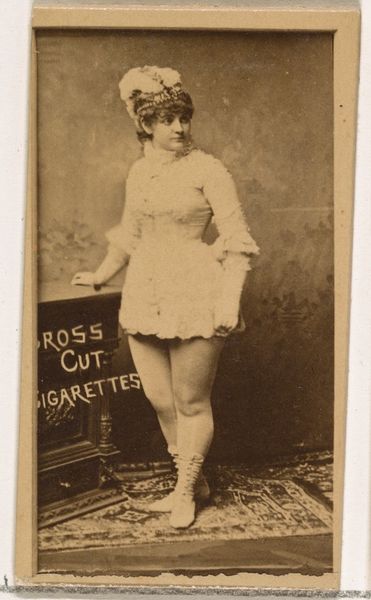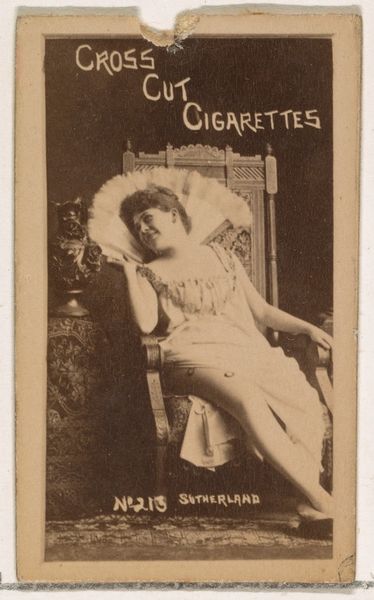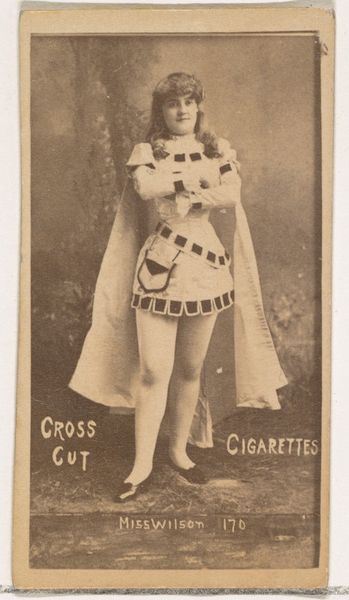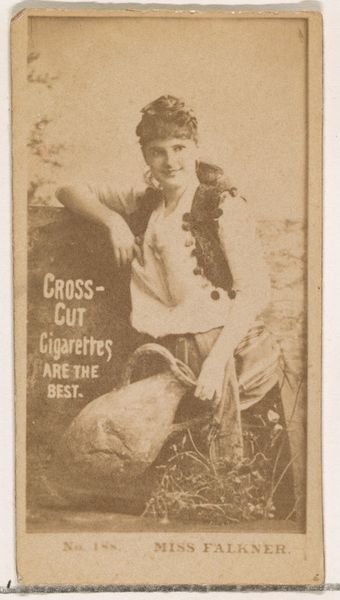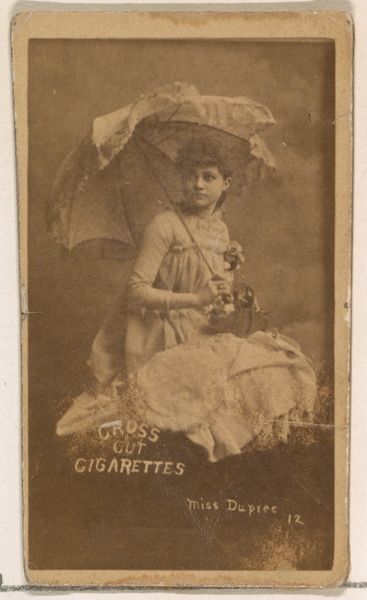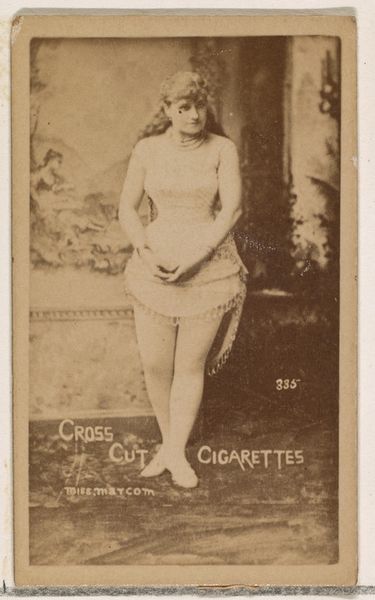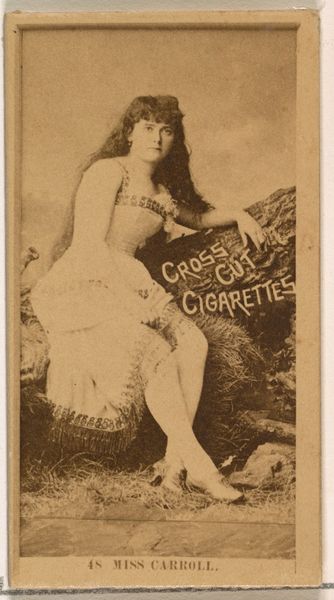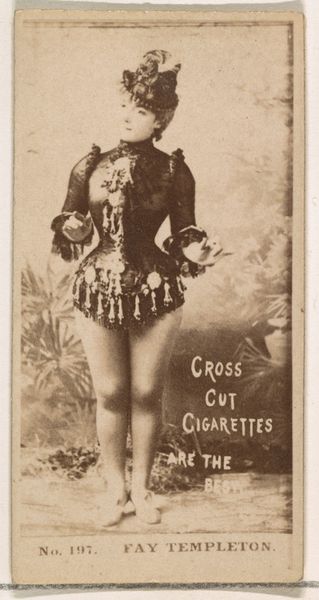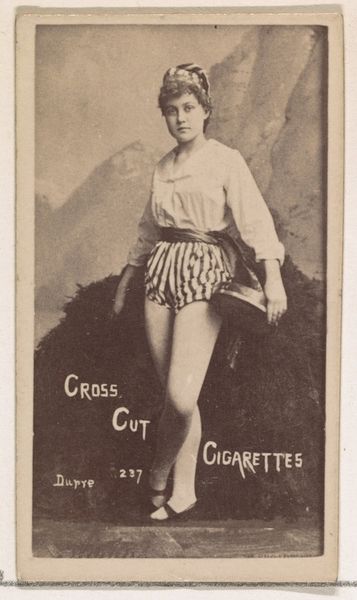
Card Number 128, Lillie Howard, from the Actors and Actresses series (N145-2) issued by Duke Sons & Co. to promote Cross Cut Cigarettes 1880s
0:00
0:00
drawing, print, photography, albumen-print
#
portrait
#
drawing
#
16_19th-century
# print
#
figuration
#
photography
#
19th century
#
albumen-print
Dimensions: Sheet: 2 5/8 × 1 7/16 in. (6.6 × 3.7 cm)
Copyright: Public Domain
Editor: Here we have a trade card from the 1880s featuring Lillie Howard, an actress. It's an albumen print, originally used as a promotional item for Cross Cut Cigarettes. The sepia tones give it a somewhat nostalgic feel, almost like a window into a bygone era. How do you interpret the image within its historical context? Curator: The seemingly innocent portrait is deeply embedded in the intersection of gender, commerce, and performance in the late 19th century. Consider that Lillie Howard’s image is being used to sell cigarettes. What does it say about the cultural expectations and roles assigned to women at that time? Tobacco companies frequently used actresses' images to appeal to consumers, implicitly linking the desirability of these women with the act of smoking. Editor: So, it’s about marketing and associating actresses with a product that perhaps… reinforced social expectations? Curator: Precisely. And there's a layered dynamic at play. Actresses like Howard were celebrities, yes, but they were also subject to public scrutiny and often faced challenges navigating societal norms. These trade cards became a vehicle through which their identities were commodified. To truly grasp it, we can look into feminist theories and concepts of the male gaze that can unveil deeper truths in this trade card, like the act of consumption and its impact on identity. Does that reframe your initial sense of nostalgia at all? Editor: Definitely. I didn't initially think about the power dynamics involved. It seemed like a pretty image, but it's much more complex when you consider it as part of a broader marketing strategy that relies on associating female desirability with smoking. It prompts reflection on female autonomy during that era and the commodification of female image in the 19th Century. Curator: Exactly. Examining art through these lenses allows us to reveal the intricate relationship between image, commerce, and gender, ultimately fostering critical thought about the social structures embedded in these visual materials.
Comments
No comments
Be the first to comment and join the conversation on the ultimate creative platform.

